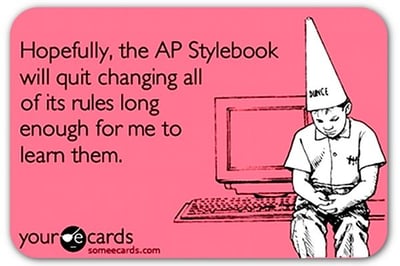In needing a break from all the recent news, I decided to distract myself with a look at how we communicate.
Language is amazing. Like a living thing, it is constantly evolving, as are the ways we as humans use words to communicate. Language is also very complicated. For example, there are more than 50,000 characters in the Chinese alphabet, with an educated person knowing roughly 8,000 of those. 8,000 characters is a lot to keep track of, certainly in comparison to the 26 that English speakers have to know and put to use.
With an alphabet of more than 50,000 characters, it would stand to reason that Chinese is probably the most difficult language in the world to learn and a quick search on Google confirms that it is. However, English, with just its 26 characters, is not an easy language either. Mainly due to the inconsistencies with rules, like “I” before “E,” except after “C.” Why does it have to be different just because of C? That is one of the things that makes English hard to master.
Not making English, or any other language, easy to learn is that they are always changing. Unabridged dictionaries were regarded as containing every single word in the English language, or at least that is what I was taught in grade school. If it wasn’t in there, it wasn’t a word. But the dictionary does evolve as well, since it has to match an evolving language.
For instance, despite being a very commonly used word - while at the same time regarded as improper - “ain’t” was finally added to the dictionary in the 1830s and its place in the language officially recognized. Merriam-Webster added it to their Collegiate Dictionary in 1993 but it had long been in the New World edition.
So as language has evolved, a few have tried to standardize its usage, especially in the written form. To most in our industry, the writing bible is the Associated Press (AP) Stylebook. There are always a couple people in any office who seem to know the rules of the book inside and out. Many of them consider it a point of pride to know AP Style, for as the gold standard, it means we’re writing properly.
I’ve always felt the same way. And statements like these are usually followed by “so what do you think of this year’s changes?” which sparks a whole new debate.

Like English, the AP Stylebook has to evolve to keep with the times. Do we have to like it? No. Do we have to accept it to remain current and a proper writer? Yes, we do. This year’s updates will be announced virtually at the American Copy Editors Society conference at the end of April. As we get set for another set of changes, here are some thoughts on previous ones.
Hyphens
In 2019, the AP said we no longer need to use hyphens between prefixes that end in “e” and the following words that also begin in “e,” like reenactment. You also don’t need to hyphenate ethnicities like “Asian American” or “African American.” My reaction? Sure, why not? I guess I can get used to this.
Percent versus %
Also in 2019, the AP switched to using the percent sign (“%”) instead of the long standard of writing out “percent.” I was not crazy about this, despite its convenience, mainly because I normally don’t care for change and for some reason, always deemed writing out “percent” as more proper.
A quick search reveals the history of the original decision - The AP Stylebook had previously spelled out “percent” because the symbol didn’t translate between AP and newspaper computers. I had always thought they did so because the percentage sign itself could cause accompanying numbers to be misread.
Regardless, % is now the way.
“They” as a singular
“They” was always taught to us as being “third-person plural.” Use of “they” as a singular was made allowable by the AP in 2017. Main reason cited: the usual - it’s just used by so many people. I do like this change because it seems in line with how society is evolving on gender-related issues, and to me, that is progress.
Use of “more than” versus “over”
This was a big change. Lore has it that the room gasped when this was announced at the American Copy Editors Society’s National Conference and the heads of copy editors nationwide exploded.
I was always taught that “more” or “less” than refers to an amount of something. “Over” is a location (versus “under”). Therefore the use of “over” in regards to an amount of something (“McDonalds sells over 6.4 million hamburgers a day”) is incorrect.
But like the word “ain’t,” if enough people use it, then it must be right (in some way). And since so many people incorrectly used “over” instead of “more than,” the AP finally relented in 2014 and made the use of “over” or “under” correct when describing amounts of something.
My stance on this change? Thumbs down.
More changes to come
In a few months, the AP Stylebook will change again, causing writers around the globe frustration as they adapt to the latest marching orders. How do you feel about the AP Stylebook changing every year?
Want to create better content? Please check out this post - “Do the Write Thing: Seven Tips for Better B2B Tech Content.”
